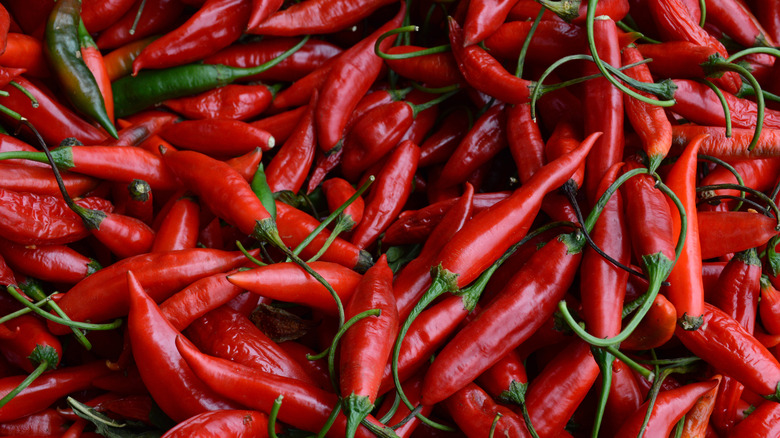The Best Drink For Washing Down Overly Spicy Food Isn't Water
They say that love is pain, and that certainly holds true when it comes to our love affair with spicy food. The rush that heat gives has been compared to the high you get from sports. True spice aficionados are even willing to deal with uncomfortable trips to the toilet just to enjoy the incomparable kick of a delicious hot pepper. But, what happens when you overestimate your heat tolerance, and your brain starts to scream at you to drink an entire river just to liberate it from the torturous pain? Pay attention to the urge to drink something, but ignore your brain's calls for water—that'll only make it worse.
Yes, the rumors are true: Water doesn't help with spicy food. What should you drink instead? The science agrees with your grandma when she says you should drink milk instead. Capsaicin is the substance that gives peppers their hot taste. Milk, on the other hand, has casein, a protein that is capable of breaking capsaicin down and making it lose its potency. So the best thing to drink when your tongue is burning is a tall glass of milk. The good news is that there is no difference between whole milk and reduced-fat milk, since they both contain casein. Similarly, anything with dairy (ergo, casein) will be equally effective. That includes things like ice cream, yogurt, and kefir.
What to drink if you don't consume dairy
Although nothing fights spiciness like dairy, many people are lactose intolerant or vegan. If this is the case, don't worry! Not all hope is lost. Studies have shown that there is something else that could substitute milk: Kool-Aid. Yes, really. The theory is that the sucrose found in sugar also cuts down capsaicin. So while Kool-Aid was used for a specific study, it's likely that any sugary drink will bring a sweet sweet relief — literally. On a dairy-related side note, since ice cream combines both casein and sucrose, it's a double whammy of power against the reign of terror that spice wages against your tongue.
There is some debate surrounding milk substitutes like almond and oat milk. Because they don't contain casein, they shouldn't really work to help with food that's too spicy. However, since they're often sweet, many people say that they do counteract the heat, especially almond milk. At the end of the day, everyone's taste buds are different, so if you feel like something works for you, reach out for it the next time you think you're strong enough to handle Korean samyang buldak ramyeon.

